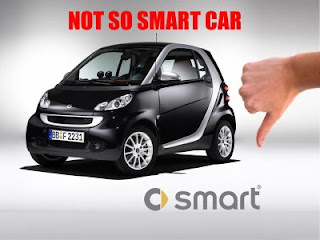#1 - YouTube's 2010 Redesign
It all began with YouTube's new site design which launched at the end of March 2010. I feel that YouTube's new look is vastly worse than the previous version in several ways.
My grievances include:
· Video summary moved below player from right-hand side
· Home and History links disappeared
· Subscribe and Upload buttons moved, became colorless and joyless
· Five-star rating system discontinued
· Blatant Facebook ripoff "Like/Dislike" rating system implemented
· User comments no longer displayed in chronological order
· No separator bars between user comments
· Player volume control now horizontal instead of vertical
In all honesty, the new YouTube redesign ranks up there with the Edsel, the Arch Deluxe, and New Coke in terms of failures. I'm not the only one who feels this way! Check out the 2,500+ comments on the YouTube Blog that echo my sentiments. The new design is an absolute travesty. Everything familiar has been discarded in favor of a new look that is about as intuitive as a tangled extension cord: where do you even begin?
This is a real shame because I used to love spending hours on YouTube looking up videos about anything and everything. Since their new design launched, I find I am spending less time on there and the time I do spend there is less enjoyable.
#2 - Google's 2010 Redesign
Next, we have the new Google homepage. Google is great at helping me find what I am looking for, but they are slipping when it comes to displaying that information to me. First things first: their logo changed in 2010. The new colors have more of a pastel look and the drop shadow is gone. Instead of looking at a search engine, I feel as though I am looking at a flat, two-dimensional page made for little kids.
But wait, it gets worse. The search results page now features a vertical column on the left-hand side of the page. Rather than filtering my search results to show only Images, News, and Videos on top of the search results page, the filter links are now on the left hand side. I don't like this position on the page, I don't like the icons, and I don't like that I cannot collapse the sidebar completely.
Most of all, I hate that the search results sidebar is a blatant rip-off of Bing. While we're on the subject, Google recently introduced a new "feature" that lets users randomize the background image on their homepage in June. Seriously, if I wanted my search engine and results page to look like they were made by idiots, I would just use Bing. Now that both search engines have nearly identical layouts, I'm left with no good alternatives.
#3 - Wikipedia's 2010 Redesign
Finally, let's take a look at the Wikipedia redesign which launched in April 2010. The new default theme is "Vector," which features clean lines and abundant gradients that have a very Microsoft-esque quality about them. The web's most famous peer-edited website is now one of the goofiest looking websites out there.
But the worst offense by far is the relocation of the search box from the left-hand navigation to the top right corner of the page. I never realized how much I use the search box until they moved it! After using Wikipedia regularly for years, I find myself frustrated and angry when I position the mouse cursor on the left hand side and my search box is gone! Arrgh!
They really missed the mark on this one. Articles written by committee seems to be working well for Wikipedia, but design by committee is not.
#4 - NewEgg's 2010 Redesign
NewEgg is the Internet's second-biggest Internet-only retailer after Amazon. They stock a wide variety of consumer electronics, computer parts, gadgets, and even appliances for sale. In 2010 their website underwent a face-lift, and I think the new look is definitely NOT an improvement.
First, the daily deals have been moved off the homepage to their own separate page. Now it takes an extra click to see what's on sale today. Content should get easier to find rather than being buried deeper into the site.
Next, the font size on the product listing pages grew a few sizes. I'm not sure what it is about the font, but it doesn't look right in the context of the page. It's hard to get more specific about it, but I just don't like the way it looks.
Closing Thoughts
If I could communicate one thing to web designers, it would be this: remember that your site's user interface does not belong to you, it belongs to your users! Ask them for feedback, listen to the responses, and for God's sake if it's not broken, don't fix it!!
Let's just hope that craigslist never updates their interface.
I'm not the only one who feels this way:
http://youtube-global.blogspot.com/2010/03/new-video-page-launches-for-all-users.html
http://www.underconsideration.com/brandnew/archives/an_inconvenient_drop_shadow.php
http://blog.wikimedia.org/2010/a-new-look-for-wikipedia/

























